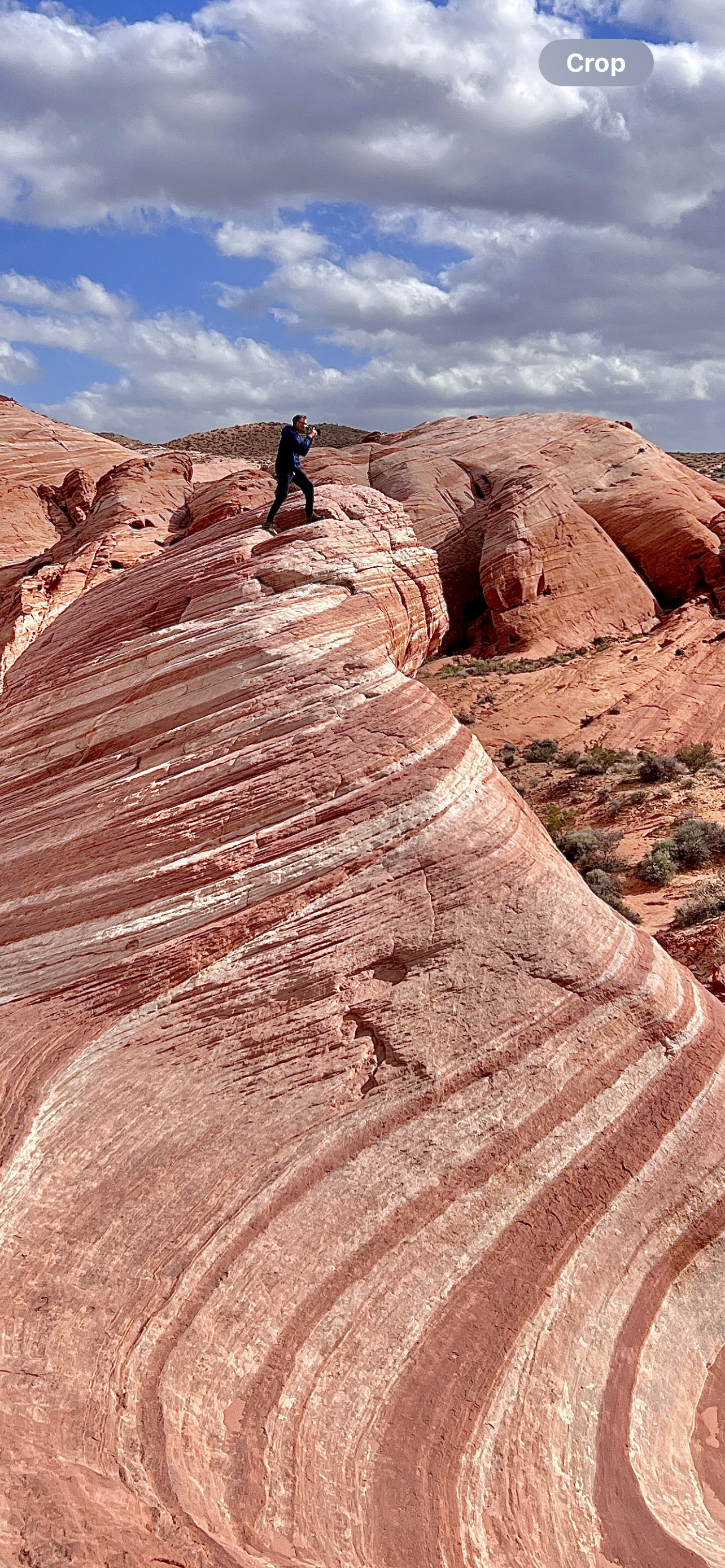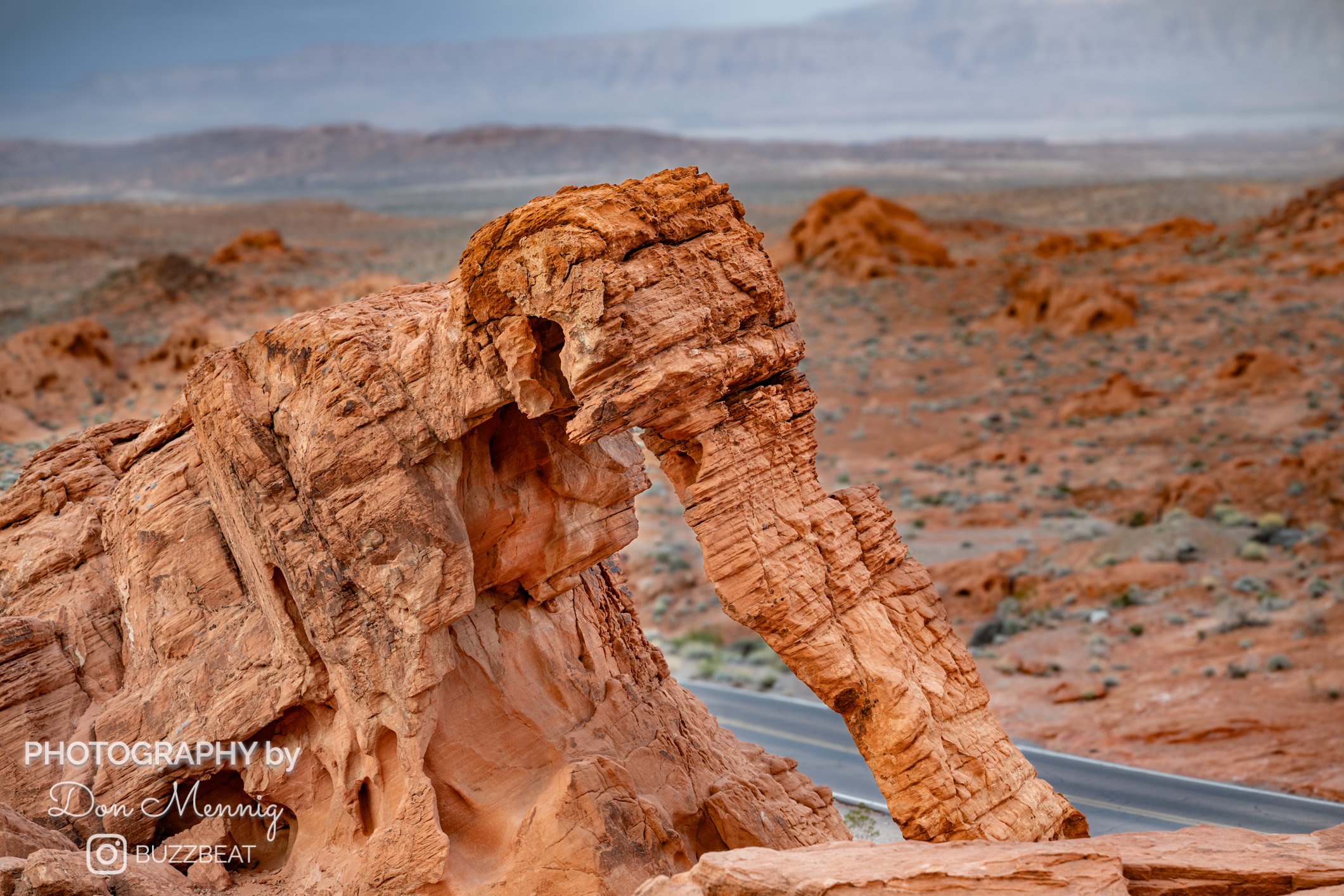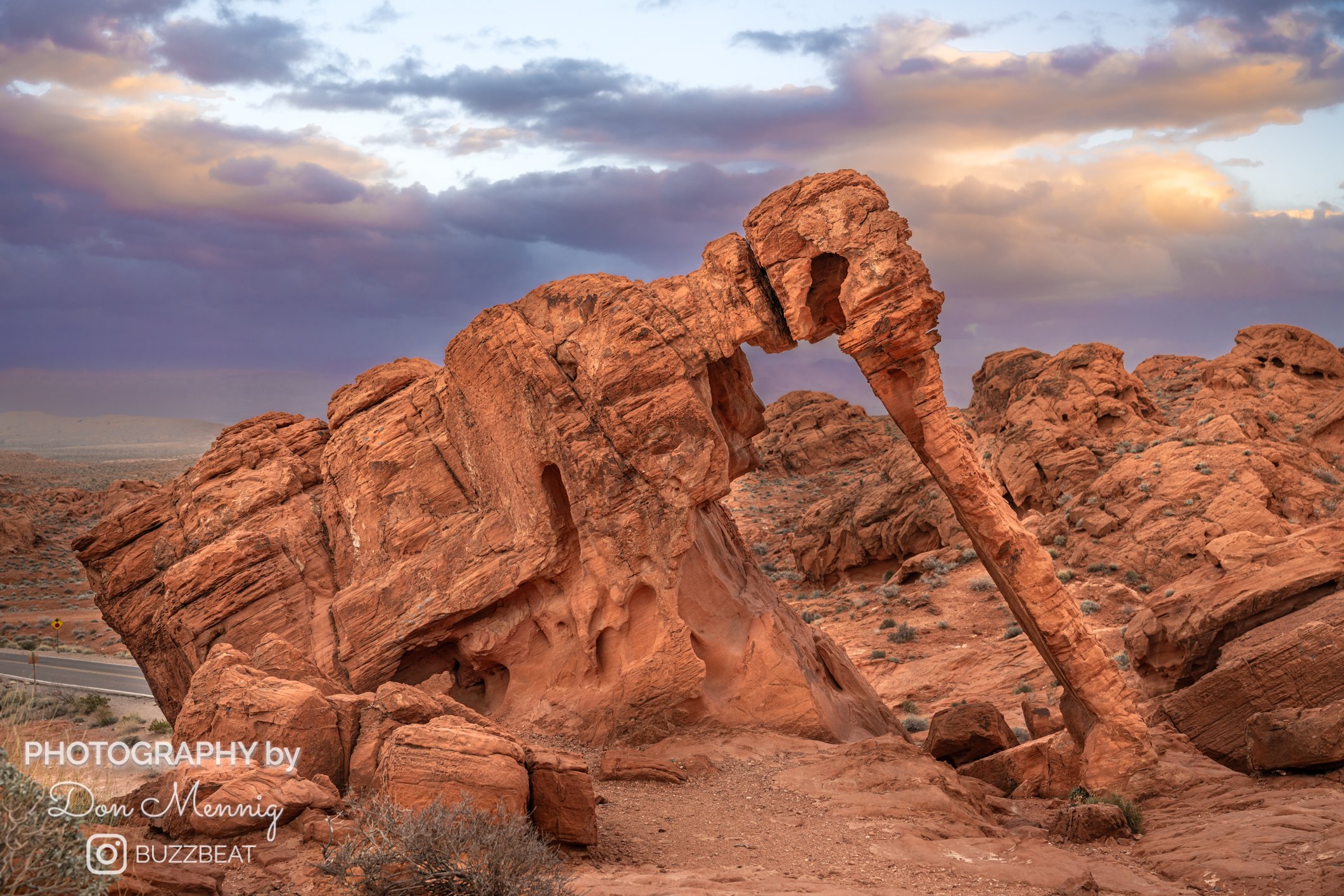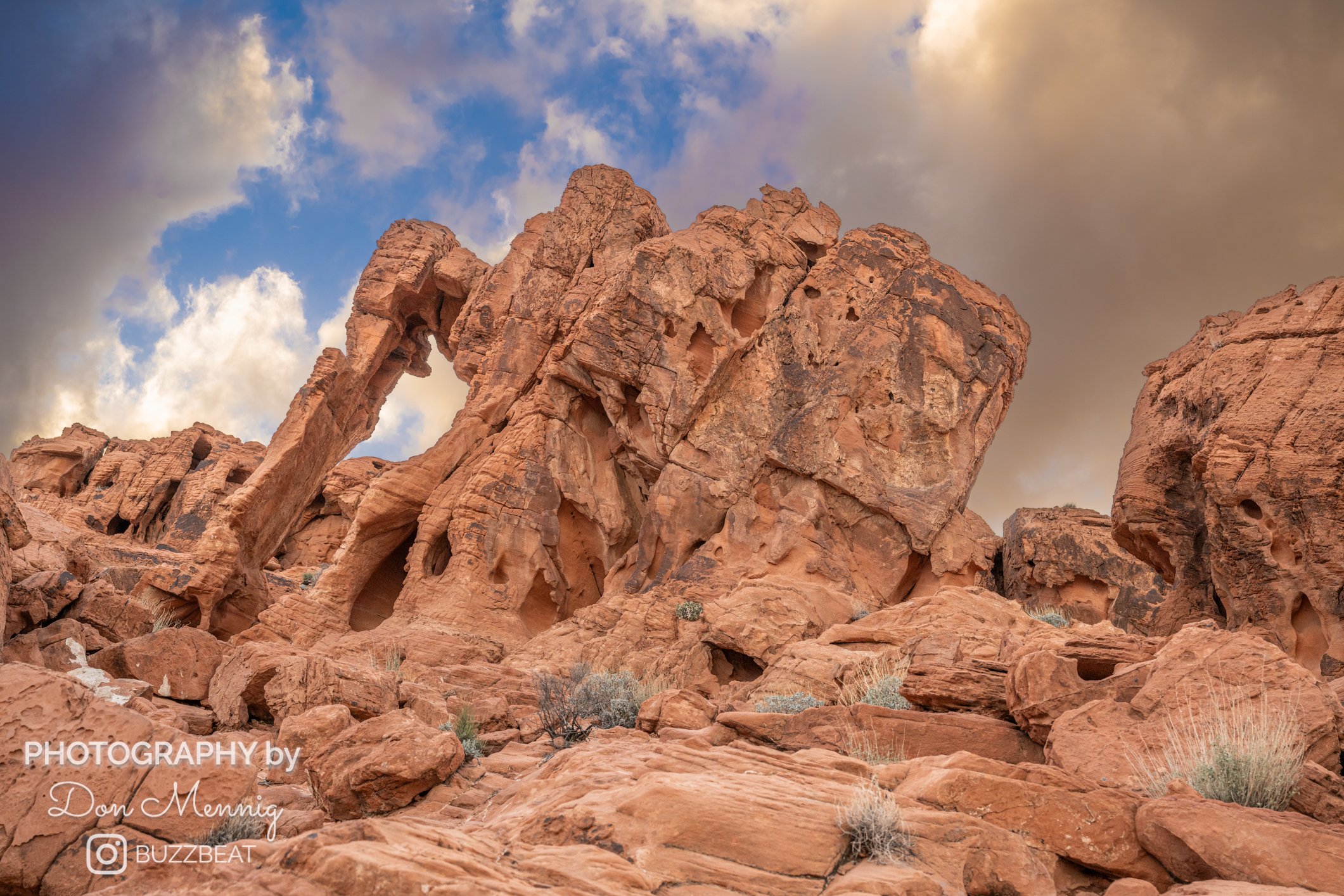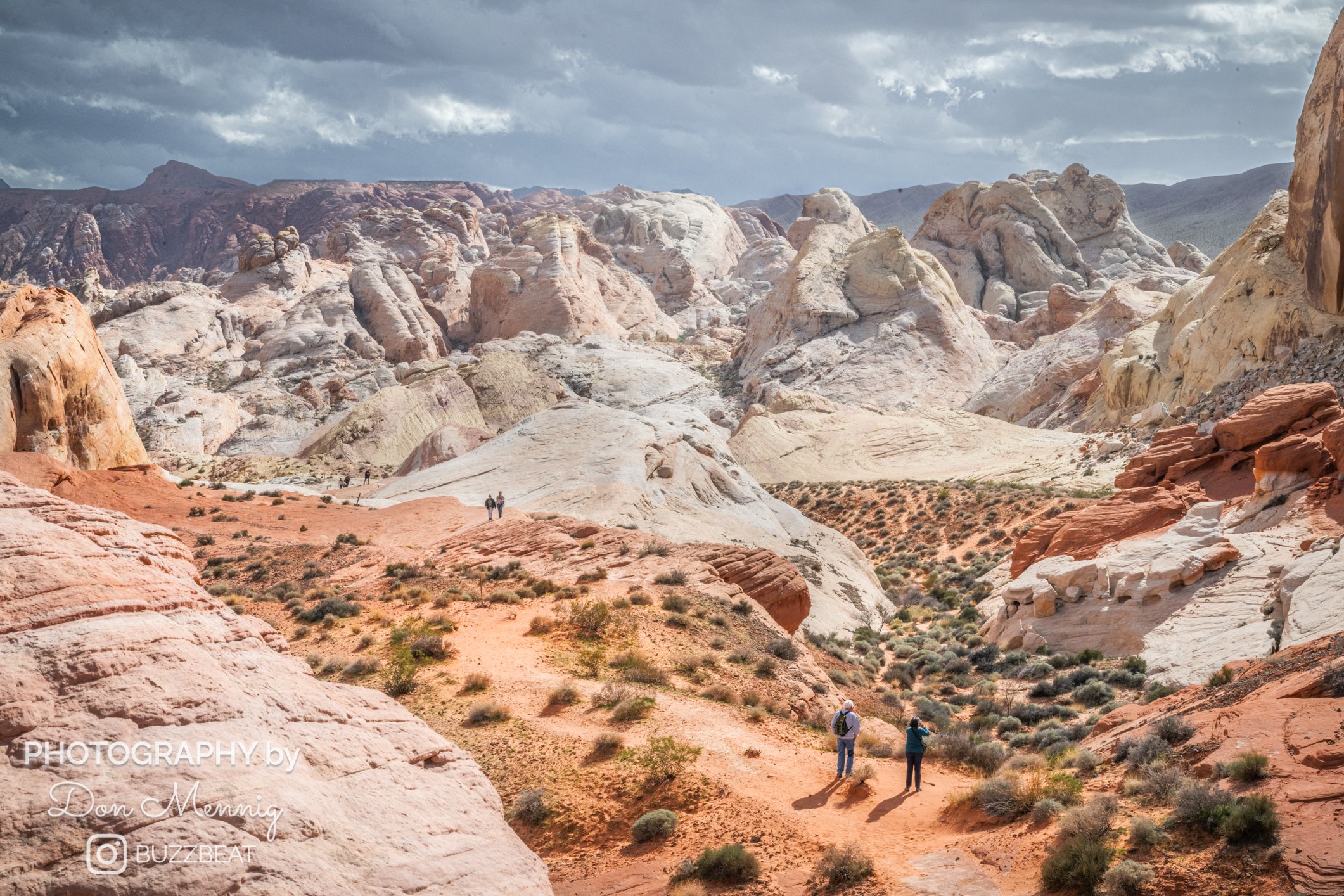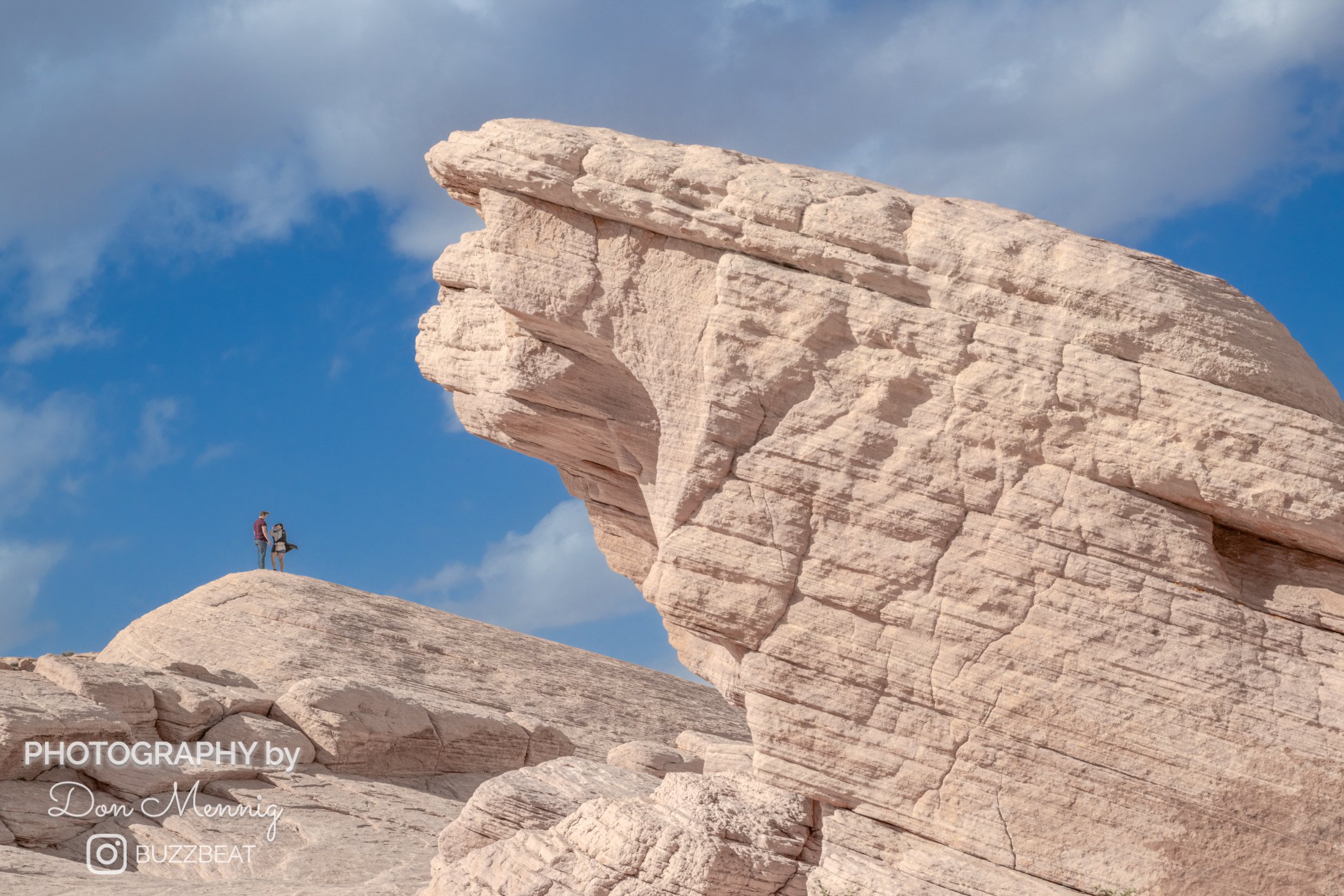Valley of Fire State Park Nevada
Tucked away in the Mojave Desert, just 90 minutes off the Las Vegas Strip, lies the Valley of Fire. This stunning state park, Nevada's oldest, offers a wide variety of hiking and ‘experience from the road’ opportunities. Each turn unveils incredible rock formations decked in deeply contrasting colors that generate an almost constant opportunity to gasp, ooohhh, and ahhhh.
Here, the red hues alight from the sun gleaming on iron oxide-enriched sandstone, not the Boulevard’s garish neon. The wind and sounds of the desert calm the soul compared to the stale, smoky stank of stagnant air and the incessant clamoring of a casino floor.
Can you tell I’d rather be in nature?! Back to the hike!
Valley Of Fire - West Entrance
The Valley of Fire is renowned for its stunning array of rock formations made from:
1. Aztec Sandstone: The predominant type of sandstone found in the Valley of Fire, Aztec Sandstone is characterized by a vibrant red color caused by iron oxide deposits. It is composed primarily of quartz grains cemented together by silica.
2. Mudstone and Limestone: In addition to sandstone, the Valley of Fire also contains layers of mudstone and limestone. Mudstone, as the name suggests, is formed from fine-grained sediment deposited in ancient lakes or riverbeds. Limestone, on the other hand, is a sedimentary rock primarily composed of calcium carbonate.
3. Navajo Sandstone: This type of rock typically appears as massive, thick layers of sandstone with distinct cross-bedding structures. Navajo Sandstone is composed mainly of quartz grains and can be recognized by characteristic white and light orange hues.
These various types of stone contribute to the park's visually striking landscapes and the explosion of colors found on its towering cliffs, arches, domes, and canyons.
Body Surfing the Fire Wave:
Using a car, visitors can cover the park and sneak in a few small hikes in 6-8 hours. While I hoped to cover a number of spots, my focus this day was photographing the Fire Wave at the top of White Domes Road, ideally at dawn or dusk. However, a powerful storm in the Sierra Nevada mountains generated wind gusts up to 70mph in the park, essentially neutering any opportunities for long exposures on a tripod. Instead, I arrived later in the afternoon (2.5 hours before dusk) and changed my focus to capturing the varied elements of the trail and gorgeous desert landscape.
The Fire Wave trail offers a modestly challenging hike/walk covering approximately 1.5 miles round trip. In cool weather, it’s quite easy, but once the temperature gets into the 80s, lookout! Beginning at the trailhead, hikers journey along a sandy trail toward a strikingly deep red and brown 650-foot mesa. Scrub grasses and burro bush surround the mesa with bits of limestone.
A short jaunt around the behemoth rock on some uneven terrain marks the most ‘difficult’ part of the hike, but it’s nothing a moderately fit individual cannot handle. Once through the mesa scramble you’ll come out on a wide stretch of marbled and striped stone with beautiful tones of red, white, and orange. It also looks quite a bit like a side of bacon!
The next section of the trail reveals streaks of swirled red and white stone and panoramic vistas of the surrounding desert landscape.
Just 50 yards past the trail end marker, the hike reaches the Fire Wave, a unique sandstone formation famous for its vibrant colors and wavy lines. This natural wonder provides an ideal spot for rest and pics before returning to the trail.
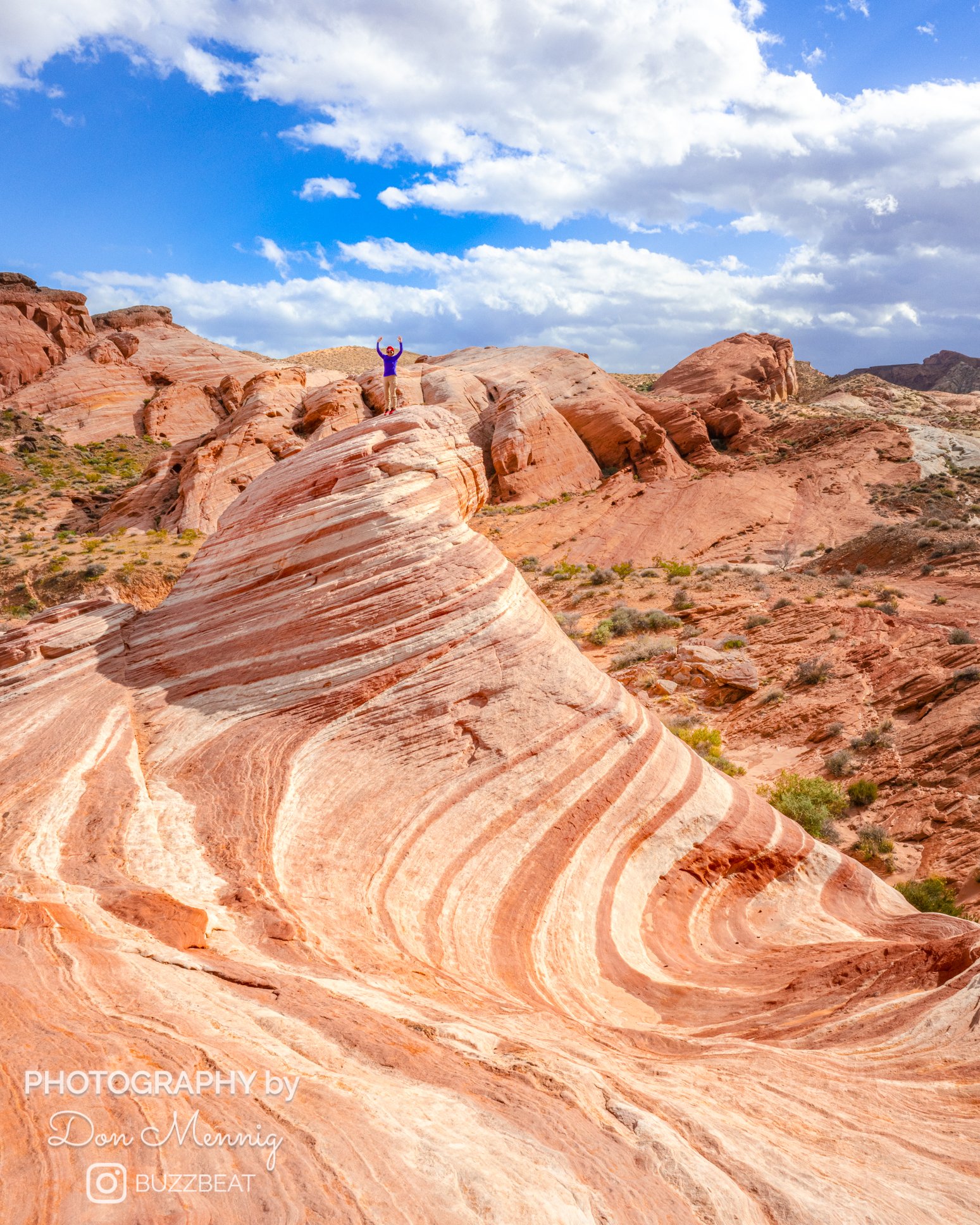
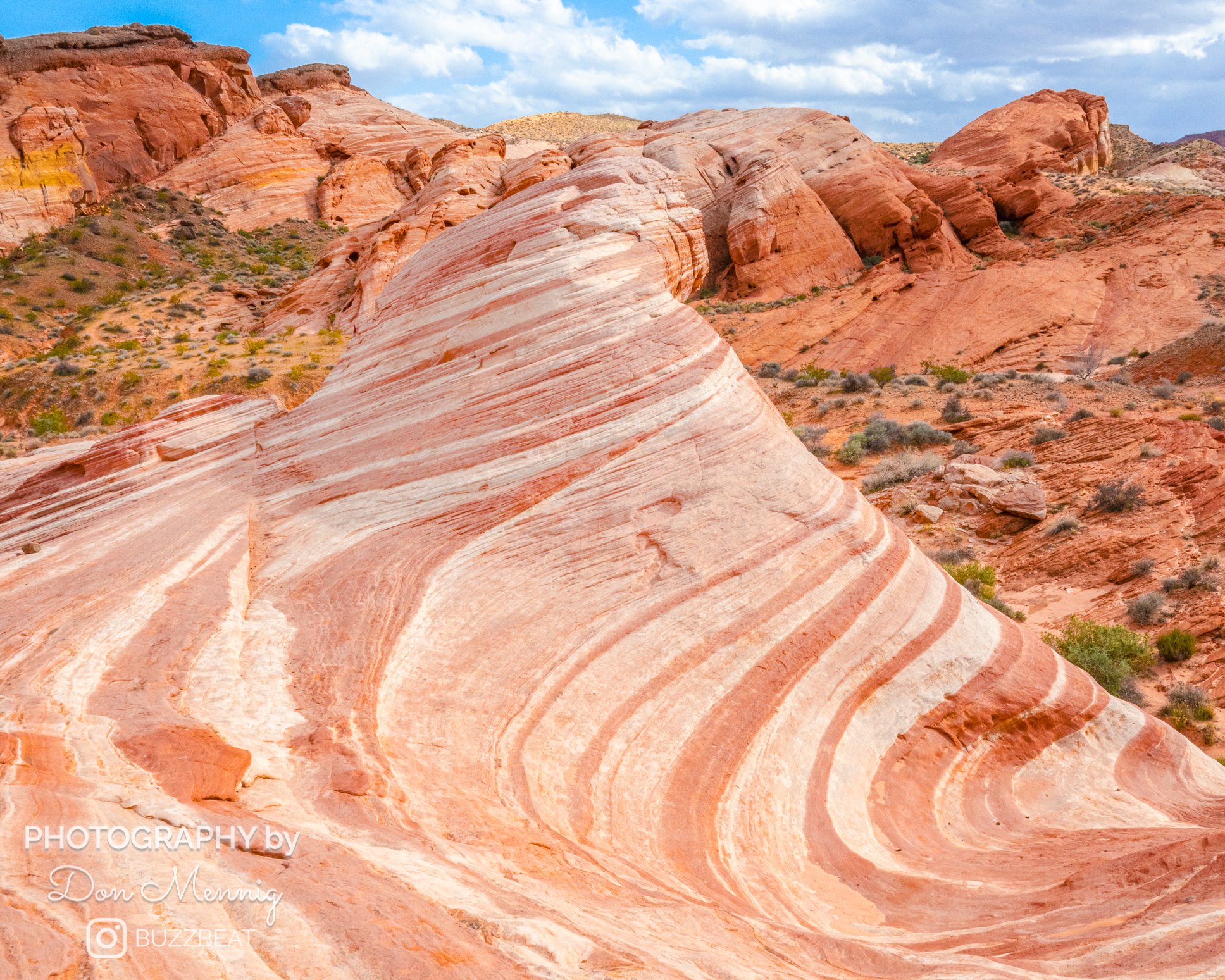
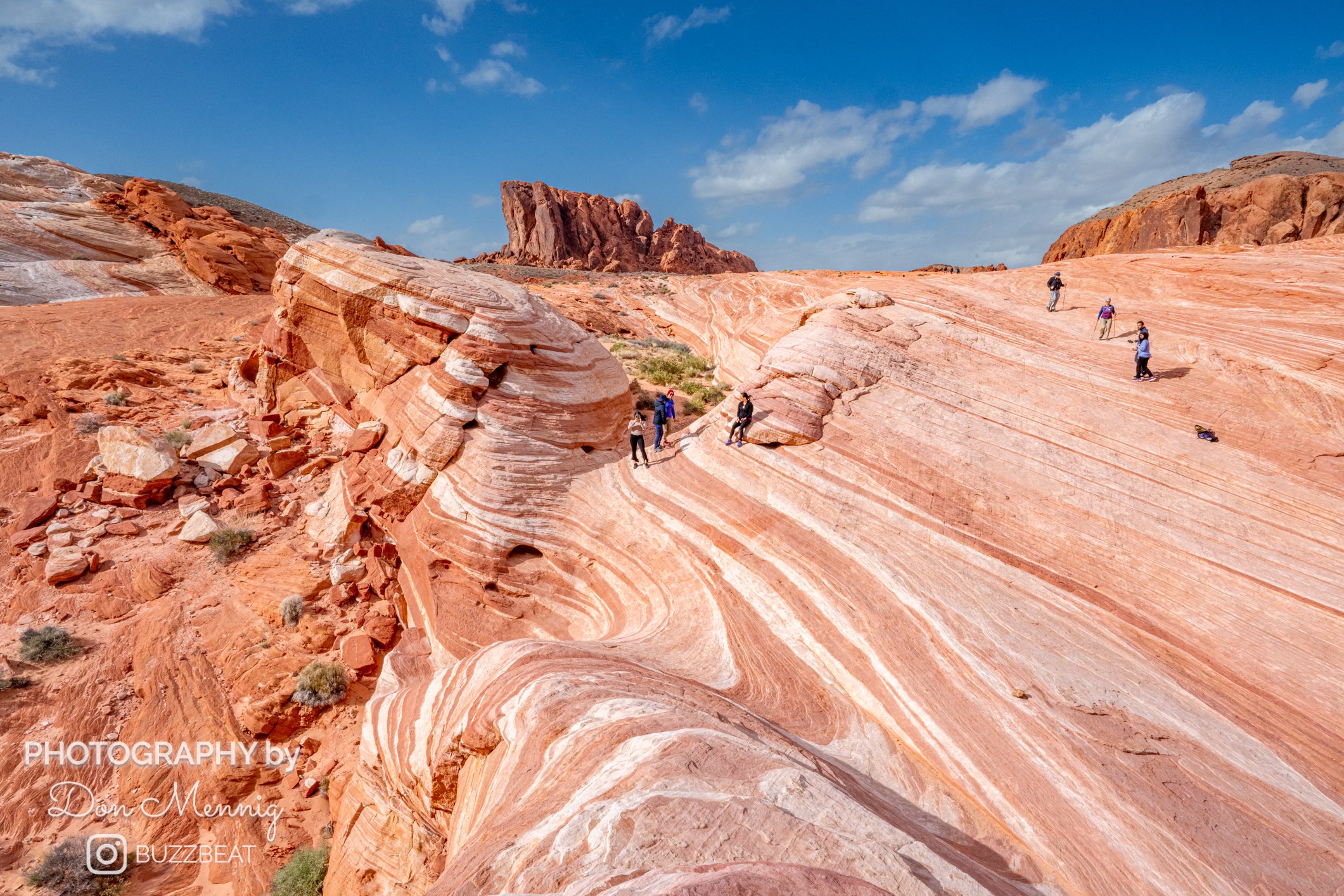
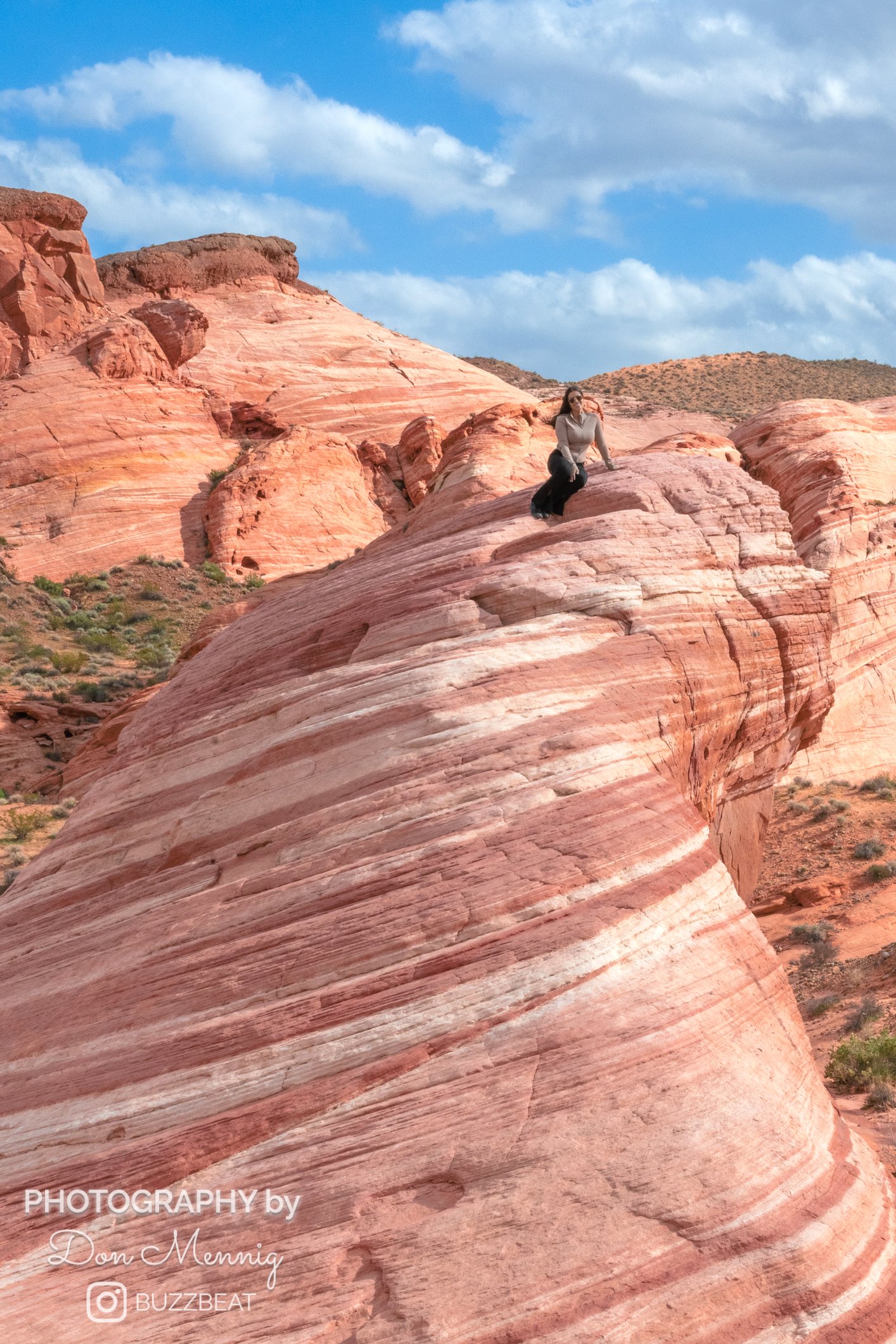
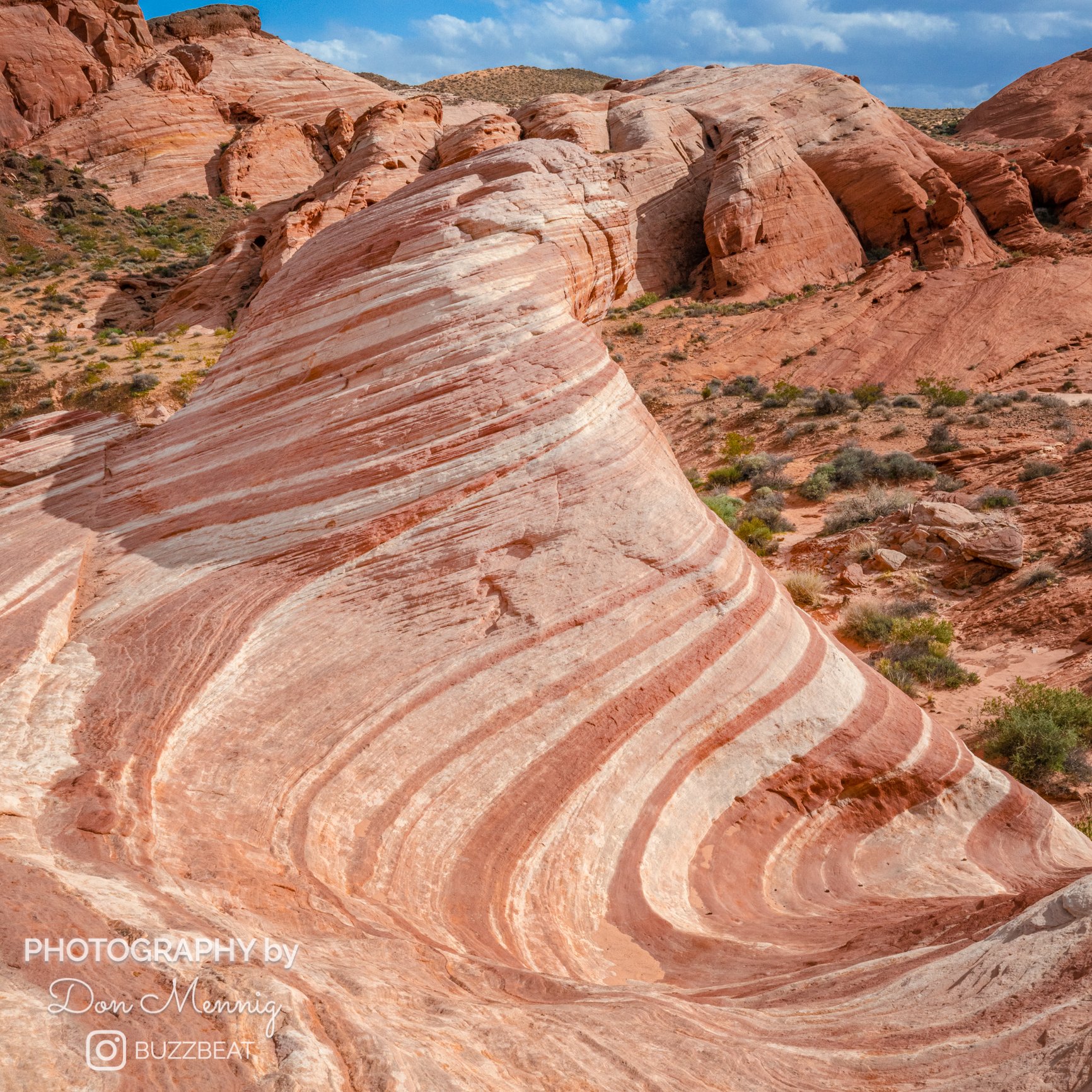
Once I grabbed my photos, and had someone take a picture of me at the top, I opted to drop below the wave for a portion of the walk back. This enabled me to get closer to different rock formations and gain different perspectives of the trail. So glad I did! Please note that the Fire Wave is closed from late spring until the fall as it gets brutally hot. Numerous hikers have died on the trail from heat-related causes. Valley of Fire park officials recommended bringing water, sunscreen, and sturdy footwear as well as checking weather conditions before setting out.
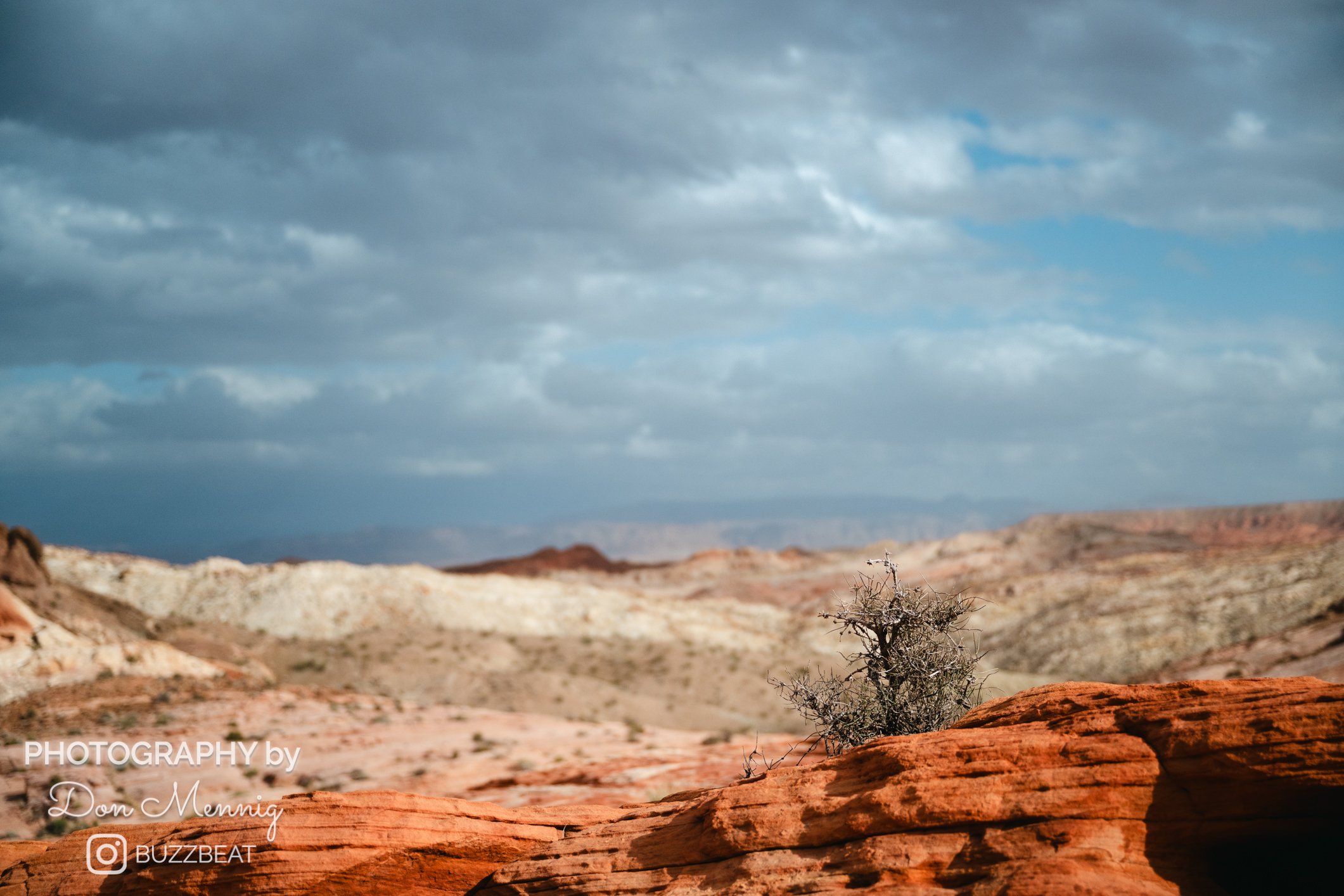
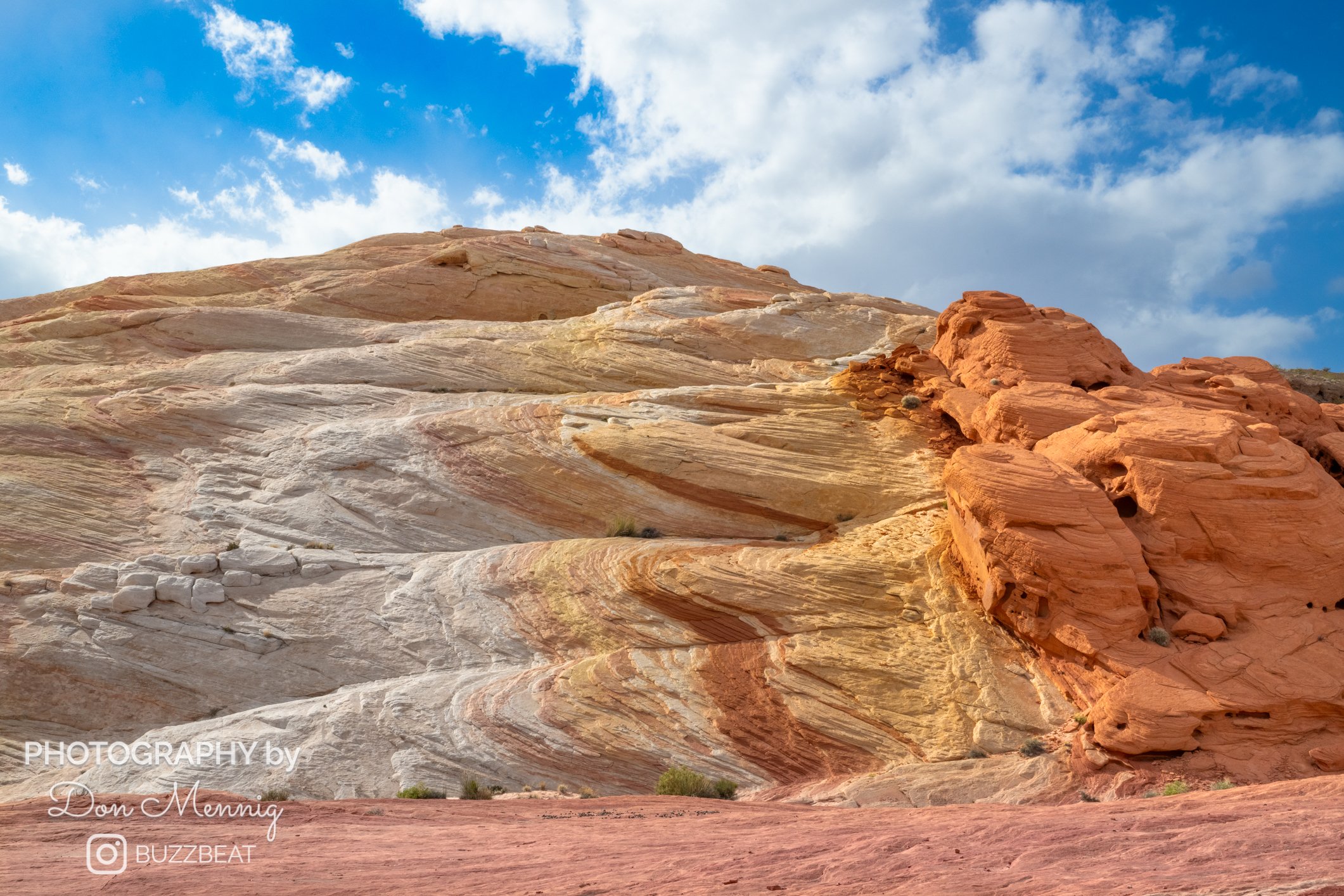
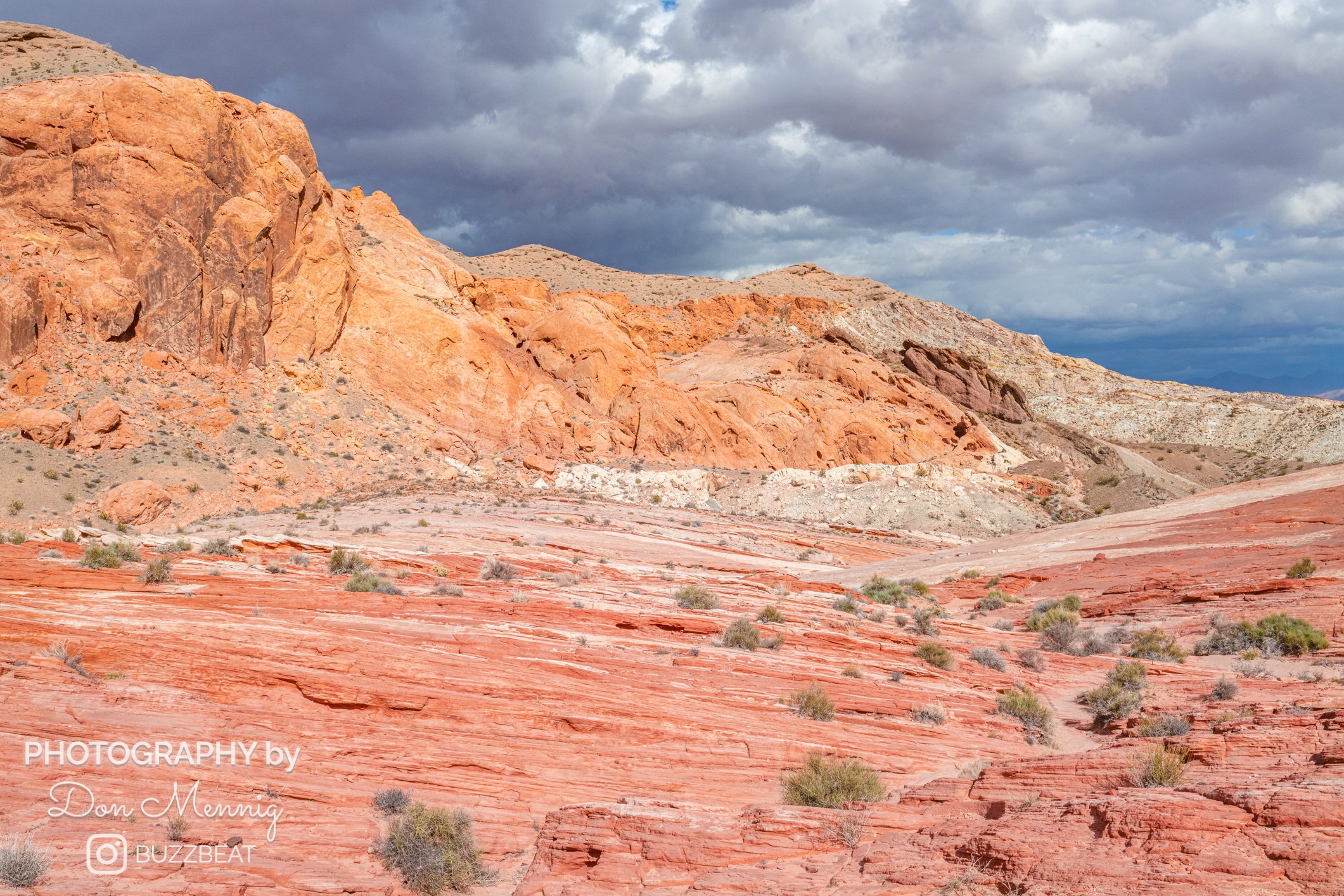

Exploring Other Highlights of Valley of Fire State Park
While the Fire Wave trail is undoubtedly a highlight of the Valley of Fire, the park boasts a plethora of natural wonders waiting to be explored. Here are a few must-see sights to add to your itinerary. All of these photos were taken the same day as the Fire Wave hike. If you push hard, you can see a ton!
Elephant Rock: Technically an arch, but obviously better known for its striking resemblance to a desert-dwelling pachyderm. Just a few meters off the road and about 20 feet up the hill, Elephant Rock, in theory, could be easily ‘seen’ from the road. However, this elephant also specializes in camouflage, so you’ll be better off parking in the nearby lot and walking up the trail. There are signs asking visitors to stay off the highway.
Atlatl Rock: Home to ancient petroglyphs of the Basketmaker culture, Atlatl Rock provides a fascinating glimpse into the history of the region at 2,500 - 4,000 years old! To see the petroglyphs, visitors need to climb a steep staircase, but you’ll be rewarded with close-up views of the intricate rock carvings. Look closely, and you’ll also see the ignorance of today’s ‘indigenous’ people who have decided to carve their own mark into some of the petroglyph areas. Boo.
Arch Rock: Just on the other side of Atlati Rock is a small natural arch. Arch Rock is a popular stop for visitors seeking to marvel at nature's handiwork. It’s also where I stumbled on a small herd of male desert bighorn sheep! A short, easy hike (I use the word hike very loosely here) leads to the arch, where you can pose for photos framed by the stunning backdrop of red sandstone cliffs.
Rainbow Vista: All the colors of the park are here, and the sweeping desert panoramic will take your breath away! There are two great options for visitors; a hike or just take a few steps away from the car and let your eyes wander! If you’re driving up the hill the first time, be sure to turn around at the top. There’s an incredible view back down into the valley with the road cutting through the hills. GREAT photo opp!
White Domes Road > White Domes: In order to get to the Fire Wave, you’ll need to take White Domes Road but don’t rush this journey! Some of the parks most stunning views happen along the way. Unfortunately, there aren’t many places to stop so you’ll want to have someone in the backseat taking video or pics out the window! There are also opportunities to hike in this area. Once you’re at the parking lot for the White Domes the trailhead for the Fire Wave is opposite the domes. And while I think they are beautiful; the domes lack a bit of luster compared to the rest of the park. Be sure to leave enough time to venture to the wave.
Planning Your Visit:
Before setting out to explore the Valley of Fire, here are a few tips to ensure a memorable and enjoyable experience:
Hydration: The desert climate can be unforgiving, especially during the summer months. Be sure to carry an ample supply of water and stay hydrated throughout your hike. I was drying out and it was only 65-degrees.
Sun Protection: Sunscreen, hats, and sunglasses are essential for protecting yourself. Dress in lightweight, breathable clothing to stay cool. If you’re going to be hiking early or late, bring easily removed and stored layers.
Trail Etiquette: Respect the fragile desert ecosystem by staying on designated trails and avoiding trampling vegetation. Leave no trace and pack out any trash to help preserve the park's natural beauty for future generations.
To recap … if you’re in Las Vegas and dying for something real but don’t have the time to travel to the national parks of Utah (Zion, Bryce, Arches) a visit to the Valley of Fire State Park promises an unforgettable adventure filled with awe-inspiring landscapes, fascinating geological formations, and a sense of tranquility found only in nature.
Whether you're tackling the Red Wave trail or exploring other highlights of the park, you're sure to be captivated by the raw beauty of the desert. Get some good hiking boots, grab your camera and water bottle, and prepare for an incredible day at the Valley of Fire.









